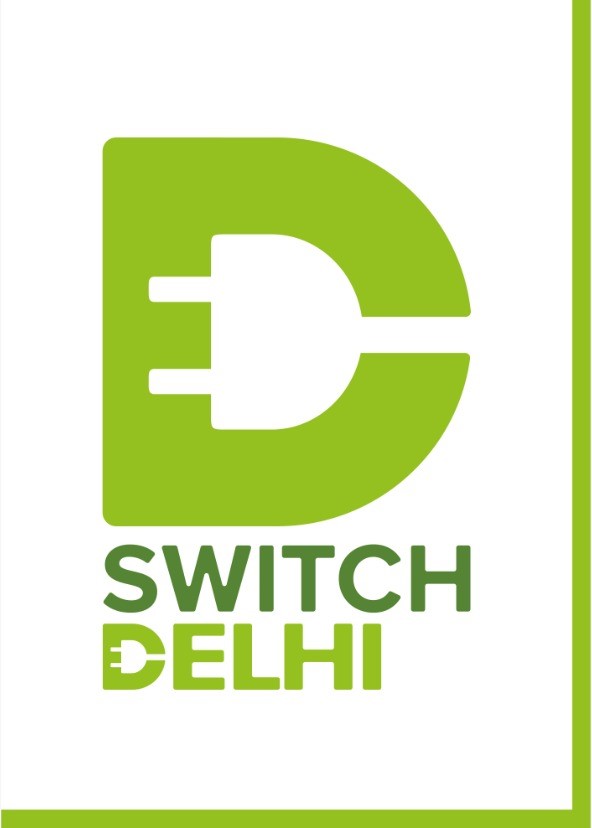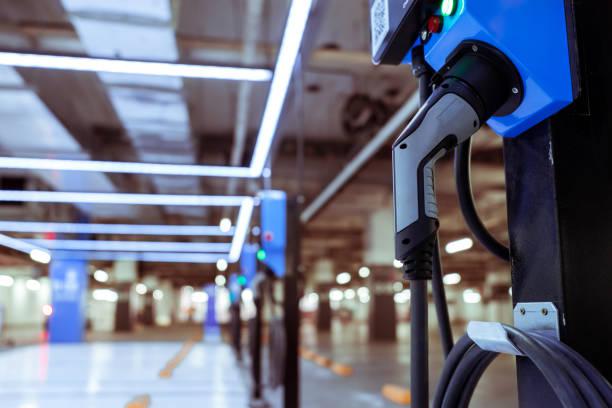06 January, 2022
Switch Delhi - Enabling widespread installation of EV charging points in Delhi
Abhishek Ranjan & Shijoy Varughese
Delhi identified two and three wheelers as priority vehicle segments which are critical for achieving the target of 25% of all new registrations to be EV by 2024.
At the recently concluded Conference of the Parties (CoP) in Glasgow, Niti Aayog, representing India in the fourth ministerial dialogue of the Zero-Emission Vehicle Transition Council (ZEVTC), highlighted the need to transition the country’s large fleet of two- and three-wheelers to zero-emission vehicles. Two- and three wheelers together comprise more than 80% of the automobiles in the country, and therefore the decision to focus India’s electric vehicle (EV) transition to these two vehicle segments is apt and timely. This focus should also inform the charging infrastructure strategy of both the national and state governments, the unavailability of which is a key barrier in the adoption of EVs. In this regard, Delhi can offer insights into factors that could drive large scale deployment of EV charging points.
Delhi identified two and three wheelers as priority vehicle segments which are critical for achieving the target of 25% of all new registrations to be EV by 2024, set by the Delhi EV policy. With 42% of the vehicular pollution (PM 2.5) in Delhi caused by two and three wheelers, transitioning these vehicle segments to EVs is also crucial for reducing vehicular pollution. The Delhi EV policy which was launched in August 2020 contains provisions which provide insights into its approach towards deploying charging points for its priority vehicle segments. One such provision is the subsidy provided to 30,000 charging points which cater to the two and three wheeler vehicle segments, and the mandate provided to the DISCOMs to enable online purchase of private charging points at a price net of the GNCTD grant, and request for charger installations at their premises. This mandate gave shape to a unique single window process which seeks to radically simplify the process of installing charging points, availing EV subsidy, and obtaining EV tariff. But before getting deeper into the single window process, it is important to highlight the existing barriers that impede deployment of EV charging points in Delhi.
Existing challenges in Delhi
The current process for installing EV charging points requires the consumers to first find reliable chargers in the market which are compatible with different vehicles and are trustworthy products. Additionally, there is little awareness about the process to avail EV tariffs (Delhi offers one of the lowest tariffs for EV charging in the country) or installing charging points which also includes significant back and forth with DISCOMs. Currently, there are no incentives for owners of private/semi-public spaces to install charging points in their premises.
Finally, the cost of chargers and electrical connection to install these charging points also act as a hindrance. Therefore, installation of EV charging points in Delhi is hampered by lack of awareness, the need to deal with multiple stakeholders, cost of chargers and electrical connection, and lack of incentives. Due to these hindrances, a lot of charging, particularly of e-rickshaws, is often done informally and unsafely.
Single window process
The single window process seeks to combine different process flows related to installing chargers and EV tariff meter, while at the same time availing the subsidy provided under the Delhi EV policy. The cost of installing an EV charging point under this process is as low as Rs 2500, which includes the cost of the EV charger (net of subsidy and inclusive of GST), charger installation cost (including cost of wiring up to 5 metres), and annual maintenance cost for 3 years.
There are three types of chargers that can be availed under the single window facility from empanelled vendors. The first is the Light Electric Vehicle (LEV) AC charger which complies to the latest charging standard adopted by the Bureau of India Standards (BIS) in September 2021. The Delhi Government was the first to roll out this charging standard within 2 months of its official notification. The charger will be primarily used for light electric vehicles (2 & 3 wheelers), while it can also be used to charge e-cars. The second is the AC 001 charging standard which is the most widely used AC charging standard and is also used primarily for 2 & 3 wheelers. The third is the DC 001 charging standard which is compatible for e-cars used primarily by fleet operators.
The single window process is being made available both online and through a phone call. Through the DISCOMs, the Delhi Government has empanelled vendors who will provide installation of two- and three-wheeler chargers, and chargers for fleet vehicles. The first step in the single window process includes viewing trustworthy EV chargers on the online platforms developed by all the three DISCOMs of Delhi where consumers can compare the price of different chargers. Additionally, the consumer can opt for new electrical connection (including pre-paid meter) to avail reduced EV tariff or continue with existing connection and schedule installation at their convenience. The system ensures that the consumer can avail subsidy for light EV chargers of up to Rs 6000 and pay net of subsidy. It is important to note that the consumer has no need to separately claim for subsidy, as this will be adjusted in the cost of the charger, and the same will be directly provided to the vendor. Finally, the consumer can opt to pay the entire cost upfront or choose a monthly subscription payment model.
Target locations and business models
The unique advantage of an EV is that it is charged when it is idle. While finding land for installation of public EV charging stations is often considered a hindrance in Delhi, the single window process will leverage existing private and semi-public spaces like kirana stores, malls, theatres, hospitals, workspaces, group housing societies etc. which have parking space and high dwell time for vehicles. The incentives will reduce the cost of chargers by up to 70% and it can provide additional revenue generating opportunities for thousands of kirana store owners. Similarly, it provides an opportunity to owners of commercial spaces like malls and theatres to monetize their parking space by providing overnight EV charging facilities to fleet owners and delivery service providers. Since the majority of the charging takes place at home and workplace, the single window process will provide an enabling mechanism to set up charging points both in residential buildings and office spaces. The process will also provide an avenue to formalize informal and unsafe charging of e-rickshaws. The ubiquitous availability of charging means consumers can charge the vehicle where they usually park their vehicles, thus eliminating the need to go to fuel pumps or charging stations to refuel/recharge the vehicle.
Such a facilitative process for installing EV chargers has been developed for the first time in India. With the widespread availability of charging points in these spaces, Delhi will have the largest number of EV charging points in and also be among the most ‘Light EV’ charging friendly cities in the world.
(Shijoy Varughese is Project Consultant, State EV Cell, GNCTD. Abhishek Ranjan is a Senior Power Distribution Utility Professional with BSES, New Delhi)








